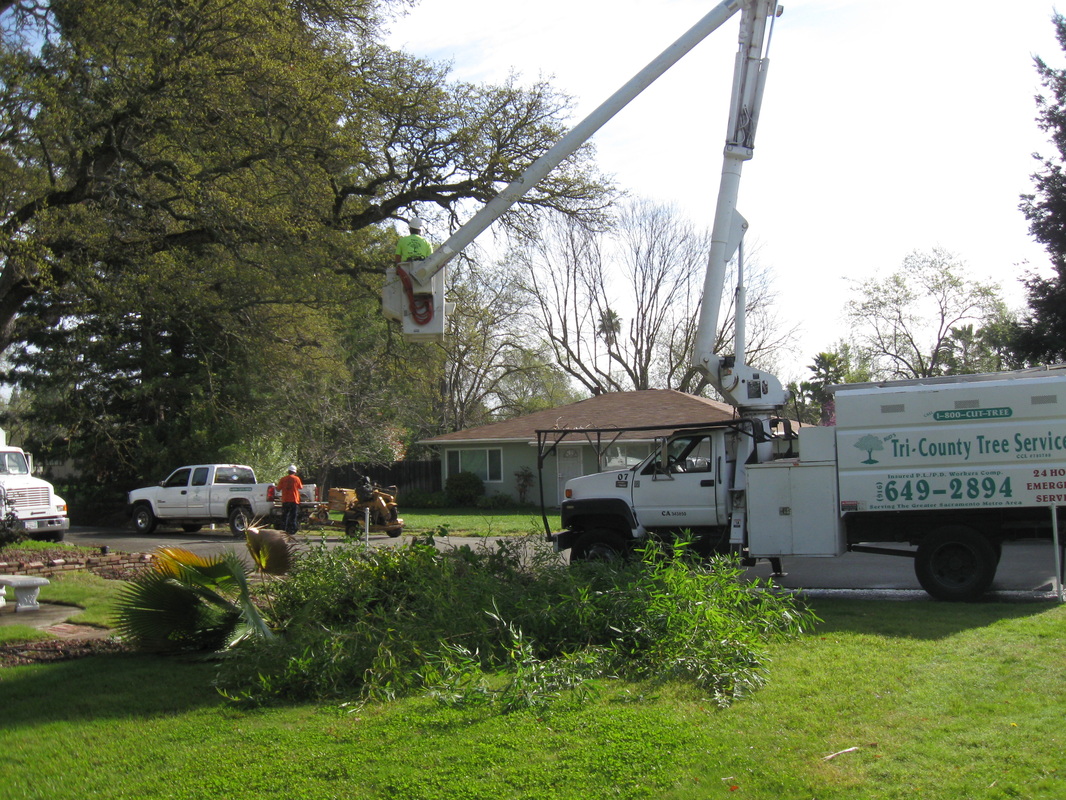|
Oaks are tough, hardy trees. A well established oak can weather some pretty hard times and even recover from a decent amount of damage. Like other trees, oaks are susceptible to disease and insect manifestation. Species of wasps, flies, and moths can attack foliage. Oaks also have their share of blight inducing diseases. Similar to humans, oaks can be treated and fully recover in most cases. Timing is everything. A single proper arborist's cut can prevent infestation entering through a broken limb. The good news is tree stewardship which is preventive and remedial tends to be much less expensive and much less intrusive. If you have an oak with discolored leaves, deformities, or parasitic growth, seek help now. We deal with a lot of trees, and a nice tree is a nice tree, but an oak is a treasure. Oaks are grand. A mature oak provides shade, protection, value, wildlife, and a couple hundred years of unique living history to what may otherwise be an unremarkable planned property. Let's be mindful of these trees, particularly during a drought.
1 Comment
I've previously mentioned in this blog that tree failure is part of the natural process and is only a concern to us when the tree is near people and property. Lightning strikes forests and the damage works itself out in some form over time. In a Sacramento backyard its entirely a different matter. A lightning strike like the one featured on our Lightning versus Redwood page, destroys the tree, but most strikes are survivable. Likewise, drought kills, but most trees will survive. Homeowners trying to shape trees into something they are not by chopping off lower limbs kills a lot of trees but many survive. The point is tree owners can dramatically increase the odds of a particular tree surviving a destructive episode through proper care.
One of the primary remedies for major tree damage is structural pruning, meaning the intentional remove of significant limbs to control decay, disease, and pest infestation, while planning a direction for stable new growth. If you have a two hundred year old oak tree in your yard, you enjoy benefits and value that you can never replace in your lifetime. Planning to redirect or assist healthy growth may extend the life of a tree for another hundred years. Another area of possible relief may be prioritizing and organizing the landscape. To the trees, plants, and grass that inhabit your yard, its a jungle out there. The fight for limited ground water and nutrients is real, especially during drought. Fortunately, there's a great deal that can be done, and fairly inexpensively, to retain ground water. Mulch, properly used, can save 70% of ground water from evaporation. Take a look at our Free Wood Chips page for more mulch information. The homeowner has strategies available to save trees. Don't buy a home with a $20,000 tree and then sell the home with a bare yard and a stump--trees have major value, otherwise developers wouldn't spend a fortune planting those filthy Bradford Pears all over Sacramento. (Read the Bradford Pear blog entry.) Proper trimming, crown shaping and reduction, weight reduction, limb cut-back, and thinning, can help pull a lot of trees through a hard, drought summer. Don't wait until your trees are brown to get help. Like animals, a dead tree can't be brought back. The signs are usually quite apparent, long before death occurs. Call an arborist. |
Stacy W. BarkerStacy is the owner of Bud's Archives
March 2016
Categories |


 RSS Feed
RSS Feed